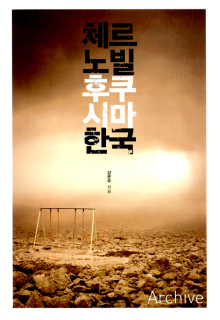 강은주, 『체르노빌 후쿠시마 한국』(아카이브, 2012)
강은주, 『체르노빌 후쿠시마 한국』(아카이브, 2012)
Eun-Joo Kang, Chernobyl, Fukushima, and Korea. (Archive, 2012)
The author of Chernobyl, Fukushima, and Korea is a Korean activist devoted to environment and energy issues. Published in March 2012, the book attempts to draw connections among the three nuclear sites, Chernobyl, Fukushima, and Korea (the last of which is understood as a collection of nuclear power plant sites). As this arrangement clearly reveals, the book argues that Korea should not become another Chernobyl or Fukushima.
Each of the three parts of the book, simply titled “Chernobyl,” “Fukushima,” and “Korea,” respectively, includes narrative descriptions of what happened during and after the nuclear accidents in 1986 and 2011, and in the case of Korea, several major conflicts over the siting of nuclear power plants and waste facilities. Each narrative description is followed by an interview with Mr. Heon-Seok Lee, also a Korean anti-nuclear activist who recently visited both Chernobyl and Fukushima. In the three interviews with the author, Mr. Lee offers what he observed and felt during his visits to the two nuclear accident sites—devastation, fear, and anger.
The first two parts on Chernobyl and Fukushima do not provide readers with entirely new information or revelation, though the first-hand observation by a Korean visitor adds some vividness for Korean readers. The book is not a piece of investigative reporting on nuclear accidents, but rather a synthesis of what have been reported on them. Still, the book may serve as a good information source for Korean readers, given that there are only a handful of books on Fukushima by Korean authors. (Several Fukushima- or nuclear-themed books by Japanese authors have been translated into Korean since 2011.)
The third part of the book on the nuclear conflicts in Korea since the 1970s will be useful for Korean and international readers. It describes how each plan to build a nuclear power plant or a waste storage facility has generated intensive debates and even violent clashes in the designated area. The nuclear plants have left deep social divisions between local communities, or even between parents and children, on the opposite sides of the debate. This last part gives a good overview of the impact of the nuclear power on Korean people—social and political, rather than health, effects on individuals and communities.
This book reminds us of the need for more reports and publications on the 2011 disasters in Japan from the Korean perspective, which would help draw more serious attention from Korean readers on the issue.
– Chihyung Jeon, Korea Advanced Institute of Science and Technology (KAIST)
![[Teach311 + COVID-19] Collective](https://blogs.ntu.edu.sg/teach311/files/2020/04/Banner.jpg)